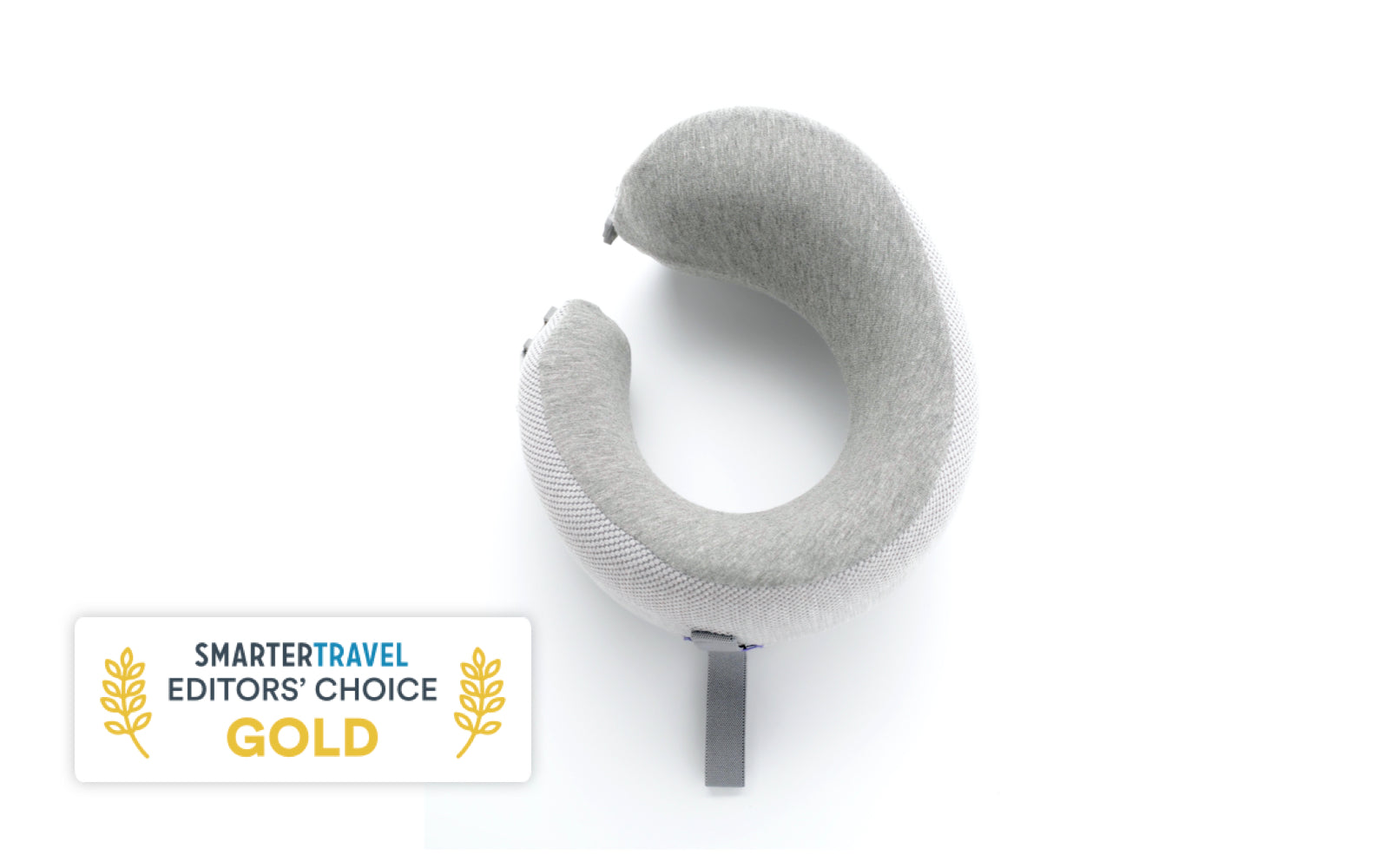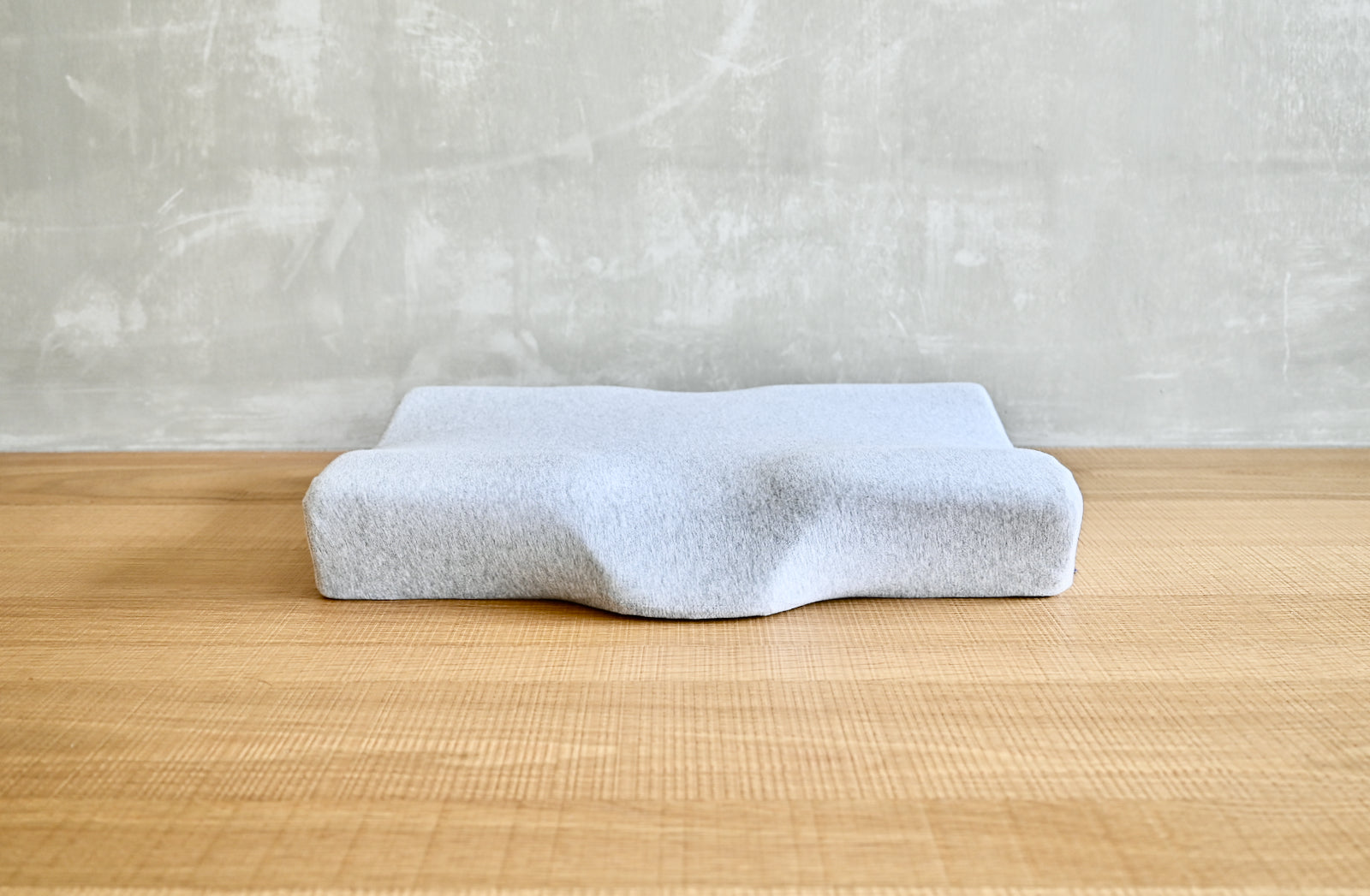Back pain. It can be a persistent dull ache or a burning sensation in your lower back. A stabbing, sharp pain that fluctuates in intensity and hits when you least expect.
To make matters worse, this pain and discomfort can increase as you bend, stand, walk, lift, or twist your back, negatively affecting your quality of life.
Lower back pain can be a result of inadequate lumbar support that causes spine misalignment. Unknowingly, you could be spending hours slouching and sitting in a bad and uncomfortable position that eventually leads to back issues.
It’s important that you consciously sit in a proper posture. And your chair could help or hold back your efforts.
It could give you a little nudge to keep your spine properly aligned or make you so fatigued that you end up slouching more.
Most chair seats — your office chair and the old dining chair you are improvising for your home office — do not provide adequate back support.
But, there is an easy way to correct this — choosing the right back support cushion.
The ideal seat cushion will provide more than just a soft surface for your body. It will:
- Relieve pressure off your coccyx, hips, and thighs.
- Distribute your weight evenly.
- Promote circulation in your lower body.
- Promote proper posture and help you maintain a neutral spine.
Here’s the big question: What features do the best cushions for back support carry?
1. The Seat Cushion Will Have the Right Material
Memory foam is the best material for back support seat cushions. It has the remarkable capability of responding to your body’s heat by softening and molding to your shape.
Why is this feature a big deal?
The ability of memory foam to conform to your body will have two main effects:
Even Distribution of Weight Around Your Lower Body
A memory foam seat cushion will contour around your body, balancing the weight in all areas of your backside.
This means the cushion will provide support where it’s needed the most, and take some weight off your pressure points.
Even Distribution of Pressure From Your Weight Throughout Your Lower Body
A memory foam back support cushion will prevent the pressure of your body weight from concentrating on certain areas of your body, such as your hips, thighs, and coccyx.
Even distribution of your lower body weight and pressure will prevent discomfort, strain on your spine, and pressure sores.
It will also prevent lower back pain and sciatica.
This is because the lower back and hip share groups of muscles. A good example is the erector spinae, which holds up the spine and gluteal muscles.
When there is too much weight and pressure applied on one muscle, the surrounding muscles may experience pain and fatigue. And when the muscle relaxes, the surrounding muscles relax as well.
Sciatica is pain that runs along the sciatic nerve — a large nerve that runs from your lower back down the back of your legs. The pain results from having pressure applied to it, so if there’s no pressure, there will be no pain.
Unlike other materials, memory foam will also provide the most structure. It is firm and doesn’t flatten under your weight, instead retaining its softness.
This means you get cloud-like comfort while also receiving the support you need.
By providing comfort and even distribution of your weight and pressure, it’s easier to sit in the right posture.
2. It Will Have the Right Shape and Contours for Lumbar Support
The best back cushions will have an ergonomic design.
Unlike regular seat cushions that come in a basic rectangle, an ergonomic seat cushion will have curves that fit the natural shape of your bottom. This will promote comfort and good posture.
The design will enhance support for your lower spine and tush, promoting back and spine support. Plus, it’ll also provide pain relief should you be experiencing it.
Basically, these are the features you should look for:
- A U-shaped cut-out design on the back to take the pressure off your coccyx and prevent tailbone pain. This design will also help distribute your weight evenly.
- Depressions on both sides of the cushion with a slight lift on the middle and the sides. These contours will cradle your thighs and position them comfortably.
To get the most out of this ergonomic design, sit in a posture that maintains a neutral spine:
- Sit up straight, no slouching.
- Your feet should be flat on the floor, without crossing your knees or ankles.
- Your ankles should be in front of your knees.
- Your knees should be at the same height as your hips or slightly lower.
- Keep your shoulders relaxed.
- Avoid long hours of sitting. At the very least, take a 10-minute break after 30 to 60 minutes.
It’s also important to go for a design that pairs easily with a lumbar support pillow.
While a seat cushion will give adequate support to your coccyx and help you maintain proper posture, a lumbar support pillow will provide added support to your entire back. It will keep it cradled in comfort.
3. The Seat Cushion Will Be Thick and Firm for Back Support
The best back support cushion will be capable of holding your weight without going flat.
If it’s too soft, the cushion will wrap around your legs, causing compression of your leg blood vessels.
This compression restricts circulation in your lower body, and blood may then pool in your legs. This results in:
- Numbness
- Tingly legs
- Swollen legs and feet
- Heavy legs and feet
All these are bound to make you uncomfortable, making it hard to maintain proper posture.
A thin cushion can also cause pressure on your hips and thighs, especially after sitting for long periods. It can make your hip flexors — the muscle stretching from your hip to your knee — stiff and tight, leading to hip and back pain.
If the seat cushion isn’t firm enough, you could sit unevenly. This could have you putting more weight and pressure on one hip.
The material and density of your seat cushion will determine its ability to maintain its firmness and thickness.
Like we stated, you want to go for a back cushion with quality memory foam.
This material has three densities — low, medium, and high.
High-density memory foam seat cushions will have the highest level of firmness and will offer an unmatched level of support. This makes it ideal for reducing and preventing back pain.
A high-density memory foam seat cushion will also retain its ergonomic benefits for a longer amount of time.
4. Get a Back Cushion with a Functional Outer Cover
The outer cover of seat cushions may seem like a minor detail, but it impacts your comfort level.
If your cushion keeps sliding around, you aren’t going to get the back support you need and the stability necessary to maintain a neutral spine. You may have to reposition the pillow every time you change your sitting position.
The best back cushions will have either of these two features in their outer cover:
- A non-slip base that keeps it in place — it can be rubber or silicon webbing.
- Two adjustable straps or ties that you can use to secure the cushion to your seat.
Unless you’re only using the seat cushion with one chair, a non-slip base will be more convenient.
You wouldn’t have to tie straps to every chair you use with the seat cushion. All you’d have to do is place the cushion on the chair you are currently sitting on, and the cushion would stick just enough to prevent sliding.
The interior of a memory foam seat cushion isn’t launderable. But a removable and washable outer cover can make it easier to maintain hygiene.
Pick the Right Seat Cushions for Enhanced Back Support
Most office chairs don’t support your back, and oftentimes seat cushions aren’t a guarantee either.
It’s important that you pick the right ergonomic seat cushion.
You want to go for a functional cushion that is also easy to care for and use.
Here is a checklist:
- Material — Memory foam
- Design — Ergonomic
- Density — High
- Outer cover — Washable, with elastic straps or a non-slip back
Our pressure relief seat cushion meets these requirements and more. It is made with extra thick memory foam that is odor resistant and can hold up to 250 pounds without going flat.
This pillow is specially designed by our in-house team of ergonomists to improve your sitting posture while relaxing your muscles and relieving pressure from your coccyx and hips.
It has functional features, such as:
- A split design at the back.
- Silicon webbing on the bottom.
- A flare-out design that accommodates different body types.
What’s more, our seat cushions come with a removable and machine-washable cover. And if you’re as earth-conscious as we are, you’ll be pleased to know that it is made with earth-friendly recycled polyester fabric.
You can also get one of our lumbar support pillows to pair with the pressure relief seat cushion.

Customer Review | Lindsay

Customer Review | Jenny M.
At Cushion Lab, all our comfort-inducing products are designed to be both human-centered and earth-friendly.
We think about your comfort, so you can focus on everything else.






















